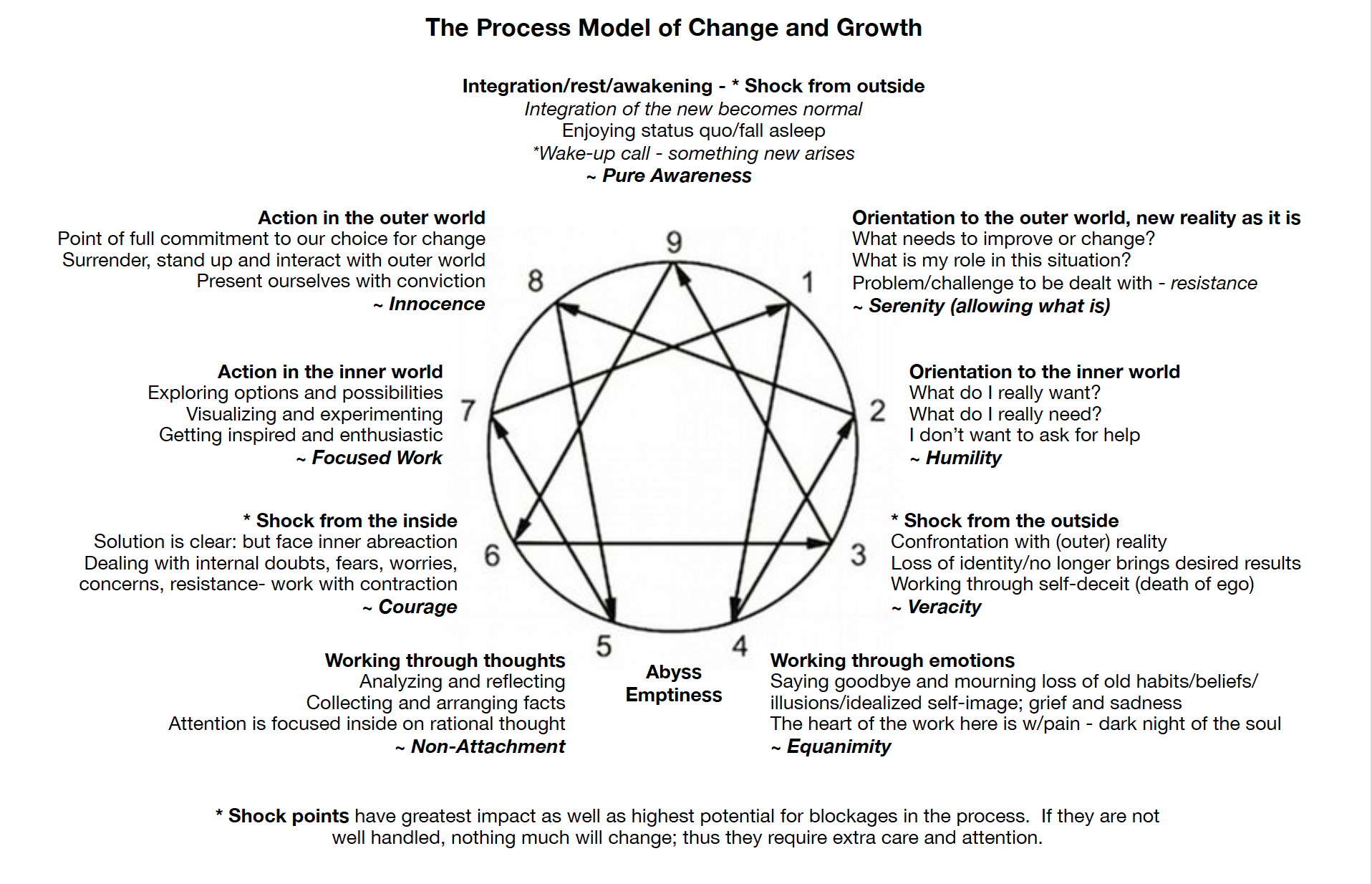
Psychology
I took this photo on a hike as it reminds me of the psychological type structures holding our identities in place.
Did you know…. Most psychological methods including psychoanalysis, Internal Family Systems (IFS), Gestalt, Cognitive Behavioral Therapy (CBT), Neurolinguistic Programming (NLP), Acceptance and Commitment Therapy (ACT), NeuroAffective Relational Model (NARM), Dynamic Attachment and Re-Patterning therapy (DAre), and Mindfulness-Based Mind Fitness Training (MMFT) are more effective when you start with an understanding of your Enneagram type.
The Enneagram can be a journey of self-discovery on your own at your pace, (see Enneagram Types here and Resources). At the same time, self-typing can be challenging because we all have blind spots about ourselves, and we may identify with multiple types or focus on behaviors rather than our underlying motivations.
Once we discover our type structure, the next question becomes: “Now what?” Much more than a map, the Enneagram is a transformational process unto itself (see graphic below), which invites us to integrate the best psychological, somatic, and spiritual methods available for our growth.
Would you like to embark on discovering your Enneagram type? Schedule a 90-minute type inquiry with me here:
The Enneagram Model of Transformation
The Enneagram
Hero’s Journey:
More than likely you’ve heard of the Enneagram, and if you view it as another fad of personality descriptions, you’re missing out on a highly accurate and powerful transformational tool. A common joke is that “discovering your Enneagram type saves you 30 years of therapy!” Indeed, the Enneagram helps us understand how we see the world (our worldview and beliefs), how we see ourselves (who we think we must be in order to be loved), what we value, what are our triggers, avoidances, defense mechanisms, automatic emotional drivers, and habitual patterns of thinking, feeling, and acting. These are important to understand, particularly since any perceived threats to our worldview, self-identity, sense of autonomy, or relationships with others can cause reactivity and a sense of being “out of control.” We may feel a loss of connection with ourselves and others.
This remarkable self-awareness tool enables us to design inner work practices best suited to our type’s challenges (e.g., self-reflection for Type 3, boundary-setting for Type 2, somatic grounding for Type 9). We can shift dysfunctional patterns, rebuild trust, deeply listen to ourselves and others, and re-connect with our core essence. Through our essence we each bring intuitive gifts, strengths, and virtues to the world. This work can often be highly transformative—personally, relationally, and even professionally.
The Benefits of Learning Your Enneagram Type
-
Understand your core motivations, fears, and desires.
Recognize automatic patterns of thinking, feeling, and behaving.
Gain clarity on why you react the way you do under stress or in relationships.
-
Improve your ability to observe and regulate emotions.
Learn how to pause reactivity and respond with greater presence.
Become more attuned to your body, energy, and nervous system state.
-
Soften your self-judgment and inner criticism by understanding your core patterns.
Extend grace and empathy to yourself and others by recognizing the motivations behind behavior.
Learn that others are wired differently—not better or worse, just different. This allows you to take things less personally.
-
Identify your blind spots, wounds, and defense mechanisms.
Use the Enneagram map to explore your path of development (including the instinctual drivers of subtypes).
Integrate psychological and spiritual work with deeper precision and care.
-
Learn how your type shows up in conflict, attachment, intimacy, and communication.
Understand dynamics between different types (e.g., in romantic, familial, or work relationships).
Shift from blaming others to owning your impact and needs.
-
Let go of ego-identification and connect with your deeper essence.
Explore type-specific contemplative or somatic practices that support inner transformation.
Move toward wholeness by integrating qualities you’ve disowned or avoided.
-
Build better communication, leadership, and teamwork skills.
Understand client or team dynamics with greater nuance.
Tailor your work, coaching, or therapeutic approach to fit different personality structures.


